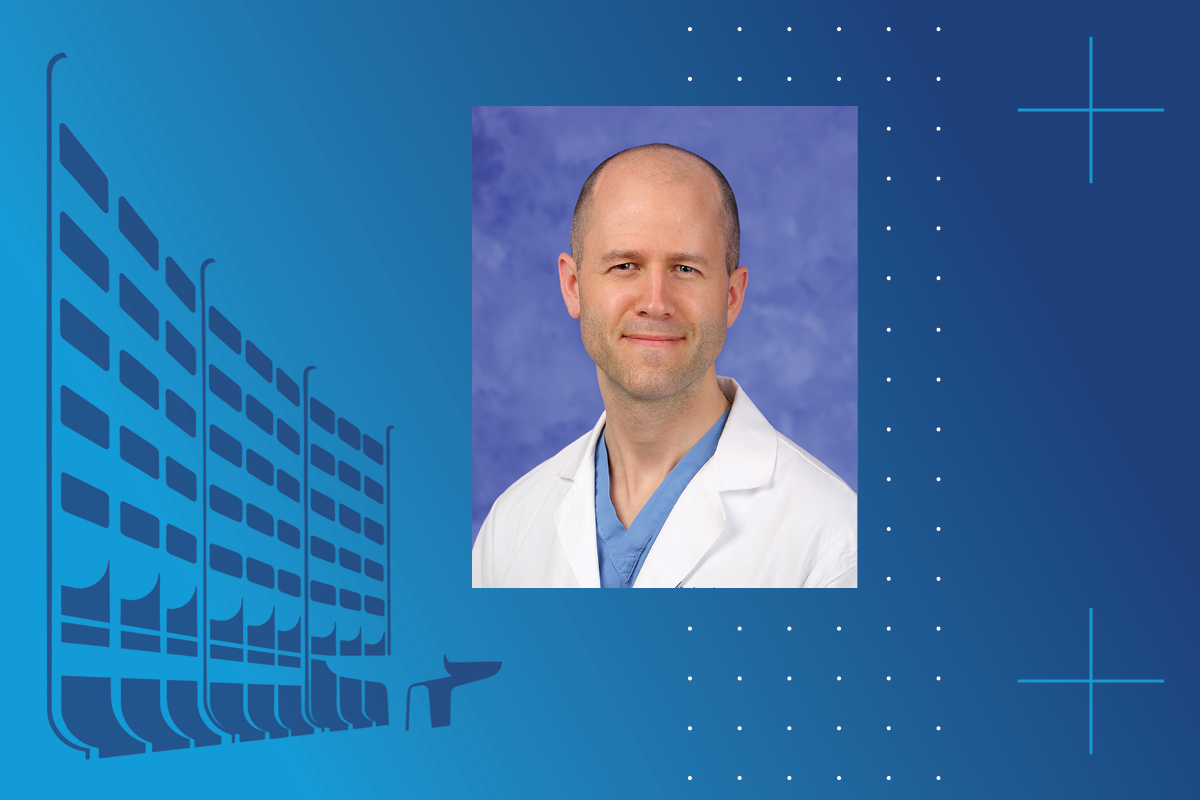Department of Neurosurgery participates in groundbreaking SQUID trial for treatment of chronic subdural hematomas

Chronic subdural hematomas (cSDH), or brain bleeds, are most prevalent in elderly patients, with a peak onset age of 80. This presents challenges for neurosurgeons, as older patients have higher rates of complications, and those with cSDH often have poor long-term outcomes.
Traditional treatment pros and cons
Although burr hole drainage is often a successful method of treatment, it comes with significant drawbacks.
“The traditional treatment of burr hole drainage is highly effective, but it is plagued by a high recurrence rate,” said Ephraim Church, MD, assistant professor of neurosurgery, neurology and radiology in the Department of Neurosurgery at Penn State College of Medicine and director of the Cerebral Revascularization Program at Penn State Health Milton S. Hershey Medical Center. “Recurrence can be as high as 20% to 30%. Often these patients are elderly, and repeated brain surgeries take their toll.”
Additionally, burr hole or craniotomy may not be an option for certain patients.
A new alternative
The College of Medicine is part of an international randomized and controlled clinical trial that involves a new leading-edge treatment for cSDH called middle meningeal artery (MMA) embolization. Church and his team were the first to perform the procedure using SQUID technology in the state of Pennsylvania.
The goal of the SQUID Trial for the Embolization of the Middle Meningeal Artery for Treatment of Chronic Subdural Hematomas (STEM) is to evaluate the safety and efficacy of SQUID, a non-adhesive liquid embolic device. The goal is stop brain bleeding by injecting a tiny of amount of the surgical glue into a leaky vessel.
“MMA embolization is a highly promising treatment that could potentially revolutionize our ability to care for patients with cSDH safely and effectively,” Church said. “We viewed our involvement in the trial as absolutely essential to help move our field forward and improve patient care.”
Unlike those who undergo traditional burr hole drainage, patients who received this treatment could have a reduced chance of cSDH recurrence.
“The way I describe this to patients is we are turning off the faucet that supplies the cSDH collection. The traditional treatment, burr hole drainage, removes the collection but doesn’t turn off the faucet,” Church said. “While MMA embolization doesn’t make the collection go away immediately, over the coming weeks and months, the patient’s body is able to remove the collection and heal.”
Clear advantages
Early results from the procedure show promising potential for this procedure to become a new standard of care for patients with cSDH.
“These studies have shown that MMA embolization may cut recurrence and failure rates by 75%, and complication rates are 50% less than traditional burr hole drainage,” Church said. “Potentially, this treatment could completely change the way cSDH is managed.”
MMA embolization is a minimally invasive procedure without the risks of burr hole drainage, making it a viable option to a much wider range of patients. It also offers immediate benefits, including a procedural timeframe of less than an hour from start to finish and faster recovery. Most patients spend one night in the hospital, and some go home the same day. Burr hole drainage requires several days in the hospital with a higher risk of complications.
“Whether this treatment will represent an improvement over traditional treatments remains to be proven in the randomized trial, but initial results are promising,” Church said. “We could potentially offer a more effective and safer operation for patients with this condition.”
Sponsored by Balt USA, the trial began in November 2020 and is currently underway at 27 facilities across the United States, France, Germany and Spain.
Read more about the study on Penn State Medical Update
If you're having trouble accessing this content, or would like it in another format, please email the Penn State College of Medicine web department.
